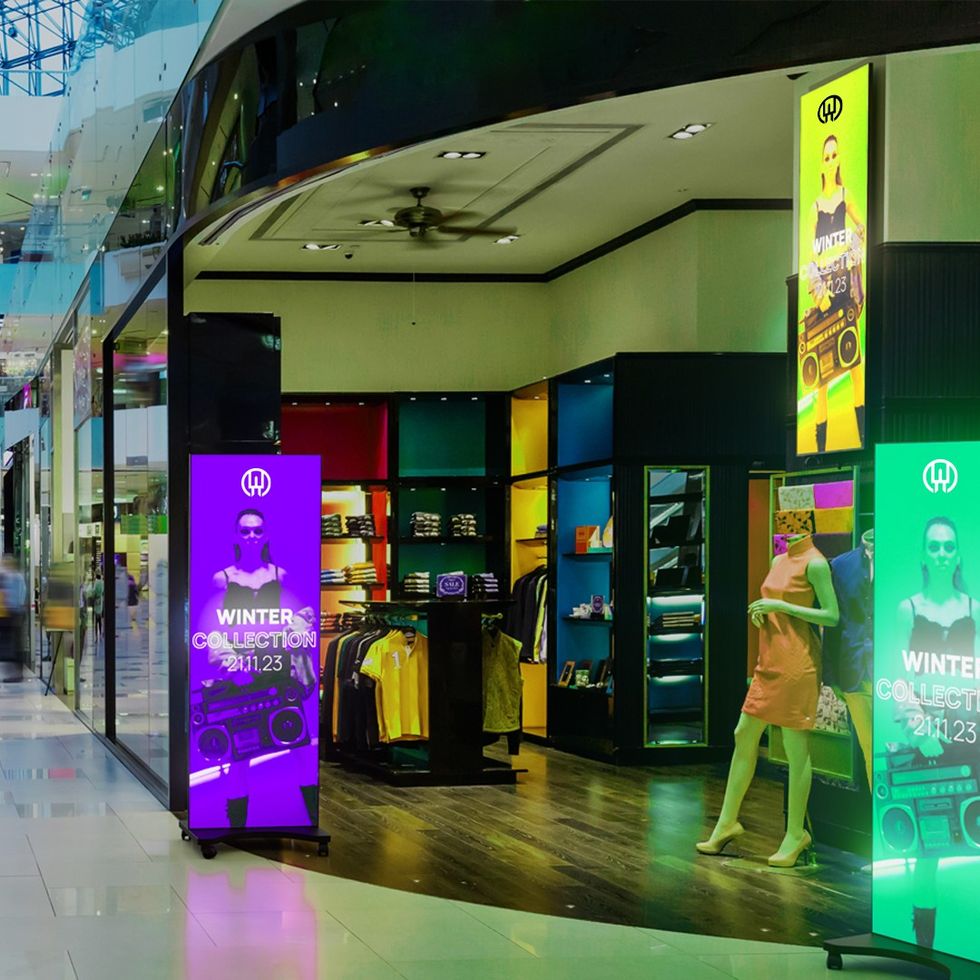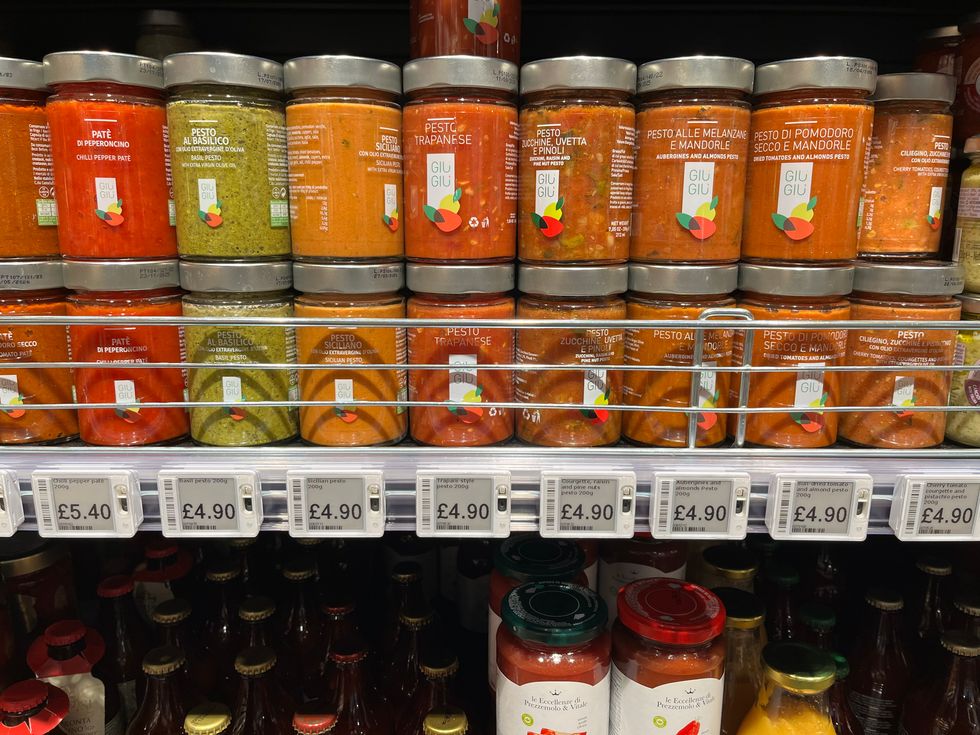The landscape of UK convenience retail is undergoing rapid transformation, driven by technological innovations that are redefining how retailers operate, engage customers, and manage their businesses.
As rising costs and changing consumer expectations challenge the sector, technology emerges as the critical enabler of efficiency, security, and competitive advantage. From innovative EPoS systems to automated age verification and intelligent electronic shelf labels, retailers now have access to a range of cutting-edge solutions designed to make their businesses more profitable and customer-friendly.
Driving efficiency
Brian Eagle-Brown, CEO of Shopmate, underscores the pressing need for efficiency and security in retail operations. “With continuing rising costs with National Insurance and wages, the ability to reduce store costs through tools such as electronic shelf-edge labels, automated pricing and promotions have become a key focus,” he explains. Integrated payment solutions are another vital area, as they “speed transaction times and reduce the risk of mistakes.”
Security, too, is a growing concern, with AI-driven tools emerging as a game-changer. “AI-driven tools use existing security camera images to help reduce consumer theft, reduce staff fraud, and monitor behaviour at self-checkout,” Eagle-Brown says. Given the rise in shoplifting incidents and staff safety concerns, such innovations offer much-needed reassurance to retailers.
He recognises that many existing EPoS systems overwhelm retailers with unnecessary features. “One thing we often hear is that many EPoS systems come with complex features that small retailers just don’t need. Their tech needs to be smart, but that doesn’t mean loading it up with all the bells and whistles – it actually means the opposite.”

To address this, Shopmate has launched ShopMate 360, a streamlined EPoS system designed specifically for retailers who require essential store operations without unnecessary complexity.
Helen Wood, owner of Edith Weston Village Store, has been among the first to trial ShopMate 360 alongside ShopMate Pay. She praises its intuitive interface: “We’ve found the till interface intuitive and easy to use; everything is precisely where you think it should be. And ShopMate Pay works seamlessly, exactly as you hope it would – it’s just really easy.”
Through its strategic partnership with DNA Payments, a leading provider of advanced payment solutions, ShopMate has enhanced its support for retailers by integrating a seamless and efficient payment solution into its EPoS system, ShopMate Pay.

Craig Borrett, Head of Technology Partnership Success at DNA Payments, highlights the shift towards mobile-first payments. “Retailers will have seen more and more customers paying with a tap of their phone rather than cash or card. That trend isn’t going away,” he states. As contactless and digital payment methods dominate, merchants must ensure their payment terminals are equipped to handle a diverse range of payment options.
“In 2025, that has already been a big focus, as more merchants upgrade their devices so they can offer their customers the best possible payment experience,” Borrett adds. The ability to cater to evolving consumer payment preferences will be a key competitive advantage.
One-stop reward hub
Retailers are increasingly looking for simple, effective ways to boost profitability, access key brand insights, and maximise their store’s potential. *shopt, a multi-brand rewards app, is making this easier than ever by providing a single platform for independent convenience retailers to earn cash rewards, access category insights, and stay connected with major brands.
Unlike traditional loyalty schemes, *shopt aggregates multiple brands across various categories, providing retailers with a single destination for earning rewards and engaging with suppliers.
“The differentiator between *shopt and a lot of other programmes is that it’s multi-brand. Retailers told us they wanted one place to go for all the brands, rather than navigating multiple platforms,” Alexa Hester, Head of Marketing and Engagement at *shopt, explains.
With over 19,500 retailers using the app in 2024 and 11,500 engaging monthly, *shopt continues to grow as a key digital tool for independent retailers looking to streamline their rewards experience.
One of *shopt’s key attractions is its straightforward cash rewards system.
“Retailers can earn rewards easily – no vouchers, no complicated steps. Once approved, they earn cash, and as soon as they reach £10, they can withdraw straight into their bank accounts,” Hester explains.
Retailers also benefit from industry-aligned promotions throughout the year, with offers tailored to key trading periods such as Christmas, Easter, and summer holidays. “We work closely with brands’ promotional calendars, ensuring retailers can access offers that align with seasonal trends and consumer demand,” she adds.
*shopt partners with leading category brands such as PepsiCo, Diageo, Suntory, and Mars, alongside emerging challenger brands. This broad selection ensures that the platform is relevant to any retailer’s stock.
Beyond rewards, *shopt serves as an educational resource. The platform provides category insights, such as Walkers’ “Max Your Snacks” guide, which helps retailers optimise snack sales through smarter product selection and placement.
“Because we work with category leaders, they take responsibility for helping retailers grow their categories. We make sure retailers can easily access best practices to improve their sales and maximise shelf space,” Hester says.

There’s no cap on how much retailers can earn through *shopt, and additional earning opportunities have been introduced through the *shopt Stars loyalty scheme and a Refer-a-Friend programme.
“Retailers told us they wanted something simple – so *shopt Stars keeps it easy: clear rewards, real winners, and a straightforward structure. The referral programme lets retailers earn extra cash by introducing others to *shopt, reinforcing the community spirit within convenience retail.”
A recent app update also allows store staff to participate in earning rewards on behalf of store owners. “Retailers are busy – this feature ensures they don’t miss out on earning, even when they’re not physically in the store,” Hester notes.
Listening to retailer feedback is a priority for *shopt. Upcoming updates include a refreshed homepage and rewards page, making it easier for retailers to navigate offers, discover new products, and stay updated on industry news.
Plans also include enhanced support resources such as tutorial videos and FAQs to provide quick guidance on using the app effectively.
The platform is evolving to support retailers through digital brand engagement. “Brands are facing cost pressures, which limits their ability to visit stores frequently. *shopt helps bridge that gap by ensuring retailers can still connect with brands digitally, access incentives, and stay informed about new products.”
One of *shopt’s key goals is to help retailers optimise shelf space and product selection, regardless of store size. Tools like Walkers’ display generator provide tailored recommendations based on store layout, ensuring retailers stock the most profitable products for their available space.
“Independent retailers don’t have ‘elastic shelves’ – they need to make the most of every inch of space. We want to provide them with data-driven insights to maximise their sales potential,” Hester notes.
At its core, *shopt is built around retailer collaboration. Feedback from the retailer panel has shaped many key features, from loyalty rewards to staff participation. “Retailers are at the heart of *shopt. We constantly seek their feedback, ensuring that everything we develop truly meets their needs.”
OOH solutions
As online shopping continues to surge, alternative delivery solutions are gaining traction. Matthew Fearn, Head of Network Sales at InPost UK, highlights the growing demand for parcel lockers: “More than half of UK consumers are now using delivery lockers for online purchases, rising to 71 per cent for Gen Zs and 68 per cent for Millennials.”
The top reasons for choosing lockers are convenience (36 per cent), costs (19 per cent), and speed (17 per cent), Fearn notes.
“InPost Lockers are equipped with technology that pairs with our consumer-facing app, ensuring a seamless and user-friendly experience. The lockers are accessible 24/7, providing unmatched convenience for customers,” Fearn says. For retailers, hosting lockers offers financial benefits as well, with guaranteed rent payments and no direct costs for installation or maintenance.

Fearn has spearheaded the launch of Send, an innovative label-less delivery service available through the InPost app. This solution enables consumers to send parcels via InPost Lockers, out-of-home (OOH) pickup and drop-off (PUDO) locations, or direct home delivery.
The implications for convenience retailers are significant. “By offering InPost Lockers, retailers will be well positioned to capitalise on the increased demand for this unique out-of-home delivery service and grow their wider sales as a result,” explains Fearn. A survey of over 2,000 InPost Locker users at convenience store locations revealed that:
- 98% visited the store primarily because of the locker presence
- 74% made purchases before or after using the locker
- 33% spent up to £15 in-store
- 52% were more likely to return due to the convenience of the locker service
These figures demonstrate how integrating smart parcel solutions into convenience stores can increase footfall and generate additional sales.
Sustainable displays
Digital signage is evolving beyond traditional promotional screens, integrating with store data to create personalised customer interactions. Lee Stephens, Senior Business Development Manager at LED Studio, notes: “We’re seeing growing interest in LED displays that integrate with footfall counters or POS systems, allowing stores to show targeted messaging that connects with customers in real time.”
Energy efficiency is another major factor, with LED technology replacing older LCD screens. “Our EDGE series is designed as a direct replacement – offering brighter, longer-lasting performance with significantly lower power use,” Stephens says. With quick installation and additional revenue opportunities from advertising, these advanced displays offer a compelling solution for retailers.
Sustainability is a major concern for retailers looking to cut energy costs and improve efficiency. Stephens highlights the launch of ECLIPSE, a power-saving technology designed to significantly reduce energy consumption for LED displays.
“What many don’t realise is that LED screens can still use up to 15 per cent of their peak power even when they appear to be off. ECLIPSE solves this by reducing standby energy use down to zero, using smart power modes that manage consumption in real-time,” says Stephens.
The technology has shown remarkable results, reducing overall energy usage by up to 42 per cent. Additionally, existing LED screens can be upgraded with ECLIPSE+, a retrofittable version of the technology that allows retailers to benefit from cost savings without investing in new displays.
Shelf-edge management
Retail media is an emerging revenue stream for stores of all sizes. Peter Ward, UK Country Manager at Pricer, explains: “While independent retailers may not have the same sizable store estates as major multiples, they can still benefit from making their shelf-edge more dynamic to drive up customer engagement and conversions.”
Automation is also key in addressing labour costs. “Labour productivity will be a watchword as we look ahead to the remainder of 2025. With National Insurance Contributions and the National Minimum Wage rises, retailers will be looking at ways they can boost productivity among their staff,” Ward says.
One of the biggest innovations in convenience retail is the shift from traditional paper price labels to Electronic Shelf Labels (ESLs), allowing staff to focus on customer service. Ward explains how Pricer Avenue is redefining the aisle experience.

“The bold, new modular ESL system redefines traditional aisle experiences, offering new ways for retailers to compose, build, run and merchandise the shelf-edge digitally. Transforming the aisle into a connected and dynamic communication platform helps retailers reimagine the shelf, powering greater operational efficiencies and enhancing seamless customer experiences in-store.”
East of England Co-op has embraced this technology, rolling out Pricer’s ESLs across its stores. The implementation has resulted in a 70 per cent reduction in manual labour spent on shelf-edge management. Store printing costs have also been cut by 50 per cent, reducing paper waste and improving overall efficiency.
Stephen Lamb, Head of Program Delivery at East of England Co-op, notes the seamless collaboration with Pricer: “The standout aspect of our ESL programme is the collaborative spirit Pricer has fostered within the delivery team. This partnership has navigated the challenges of an intensive change programme, demonstrating resilience and adaptability while exceeding the original scope of price and promotion for tangible benefits.”
With e-commerce growing, it’s important for brick-and-mortar stores to enhance the in-store experience to remain competitive, and effective shelf management plays a crucial role in improving product visibility, accessibility, and security.
“A successful shelf management strategy prioritises customer engagement,” says Daryl Bedford, Managing Director at Harrison Retail. “High-margin items should be at eye level, and impulse-buy products should be near checkout areas to boost last-minute sales.”
Vertical merchandising and adjustable fixtures like T-rails and shelf dividers improve product visibility. Bedford stresses the importance of flexibility: “Retailers need solutions that allow quick adjustments for seasonal stock and promotions. Magnetic tape variants and customisable configurations optimise shelf space efficiently.”
Ultimately, investing in smart shelf management helps retailers maintain a visually appealing, customer-friendly store layout. “High-quality shelf management solutions enhance in-store experiences, strengthen brand identity, and boost sales,” Bedford notes.
The AI revolution
Artificial intelligence is making its way into independent retail stores, bringing a host of new efficiencies. Deepak Tewari, CEO of Privately SA, predicts: “Self-service tills have become commonplace in supermarkets, and you can expect to start seeing these in other outlets this year. Smart QR codes are also on the way, replacing traditional barcodes to provide consumers with insights into products, such as sustainability and carbon footprint.”
AI is also enhancing inventory management and customer engagement. “AI-driven tools looking at customer data to offer tailored product recommendations and improving engagement, while AI can also aid inventory management, helping predict demand trends, optimising stock levels, and reducing waste,” Tewari notes.
With retailers selling age-restricted products such as alcohol, vapes, and lottery tickets facing strict compliance regulations, Privately SA has introduced AgeAI, an AI-driven solution that automates age verification through facial estimation.
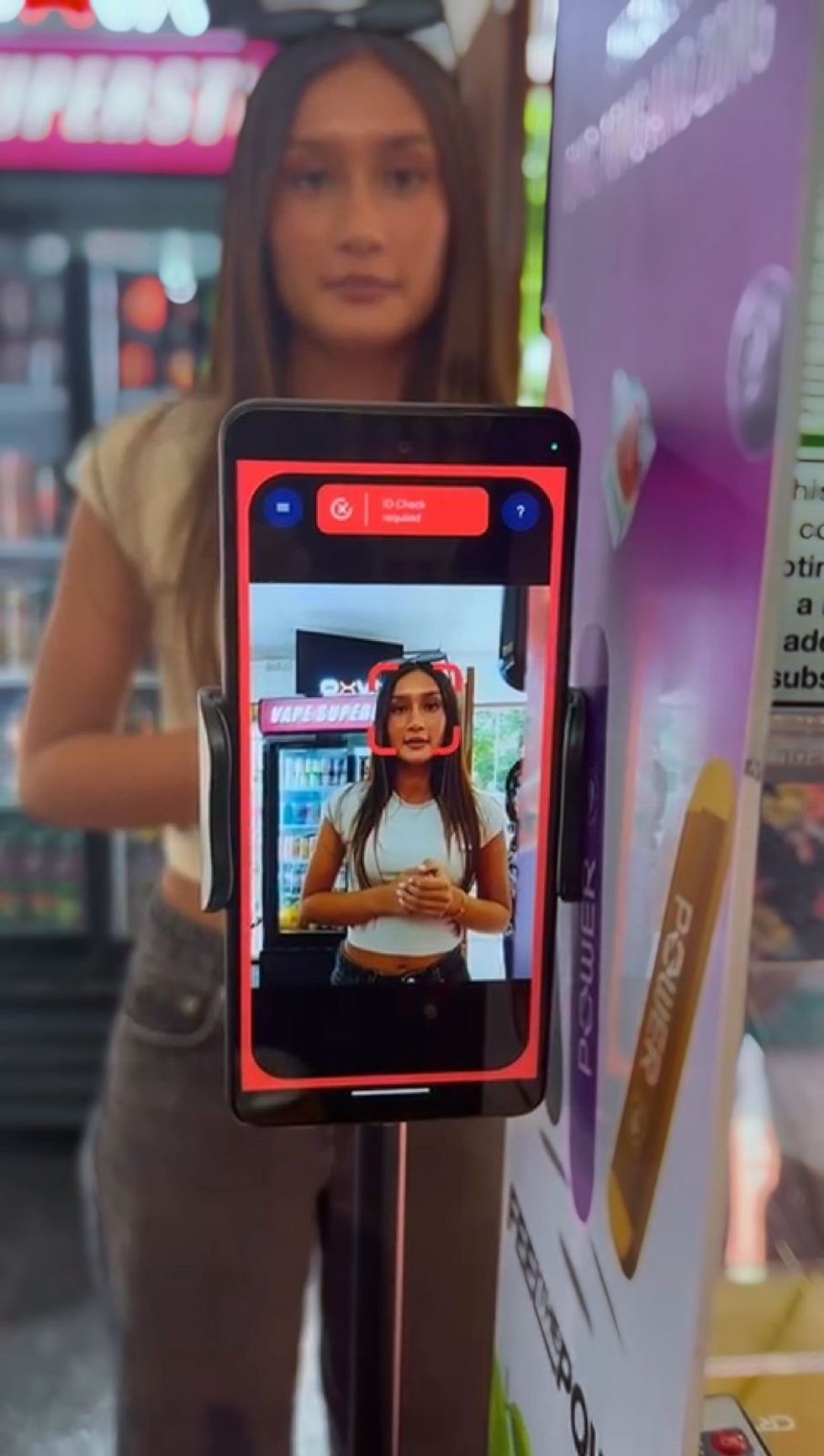
“AgeAI removes guesswork from age checks and mitigates the risk of fines for selling restricted goods to underage users. It is 100 per cent anonymous, GDPR-certified, and protects staff by reducing unnecessary ID checks that can lead to conflict,” says Tewari.
A key feature is the automated refusals register, which logs incidents where purchases are denied due to age restrictions. This data helps business owners monitor trends and implement targeted compliance measures. Field data from UK vape stores using AgeAI has revealed that, on average, it prevents eight underage customers per store per day from purchasing vapes.
Paul Boyle, CEO of Retail Insight, advises retailers to approach AI with a balance of enthusiasm and pragmatism. “Whilst we should be excited about AI and what it enables, it is not a panacea. Organisations continue to struggle with the integration of data from diverse sources, the preparation, cleansing and enrichment of data, and ensuring appropriate data governance – all of which are critical for AI to function effectively and deliver ROI,” he explains.
For independent retailers, Boyle suggests three key operational behaviours:
- Inventory Optimisation: Ensuring availability while minimising waste and shrinkage.
- Efficiency and Customer Experience: Enhancing both operational effectiveness and customer satisfaction.
- Data Integrity: Building AI systems on accurate, well-managed data.
Boyle also points to emerging AI trends, including Agentic AI, where systems act with minimal human supervision, and Autonomous Checkout Systems, which allow customers to “Just Walk Out”. These advancements, combined with omnichannel integration and real-time analytics, are shaping the future of retail.
Fighting food waste
Minimising food waste is not only an ethical concern but also a financial priority for retailers. Retail Insight has developed WasteInsight, an AI-powered tool that helps businesses track waste patterns and adjust stock accordingly.
Boyle highlights the success of the solution at Lincolnshire Co-op: “Our recent work with Lincolnshire Co-op reported a 90.8 per cent sell-through rate using WasteInsight, which prevented 2.1 million meals from being wasted and resulted in the prevention of 5,700 tonnes of CO2 emissions.”
One of the key features, Waste Trim, analyses historical data to identify frequently wasted products, enabling retailers to make informed stock decisions. By optimising inventory, Lincolnshire Co-op has reduced overstocking, cut waste, and improved overall profitability.
Innovative solutions like Gander, a SaaS platform that maximises the visibility of close-to-expiry food across multiple digital channels, are also helping businesses tackle the food waste challenge head-on.
By integrating with retailers’ EPoS and inventory systems, it automatically lists reduced-to-clear items in real-time, ensuring they reach a wider audience before going to waste.
“Retailers facing increasing cost pressures need practical solutions that not only protect their margins but also enhance customer engagement and reduce waste,” says Stacey Williams, Business Development Director at Gander. “Gander provides a proven way to achieve all three.”
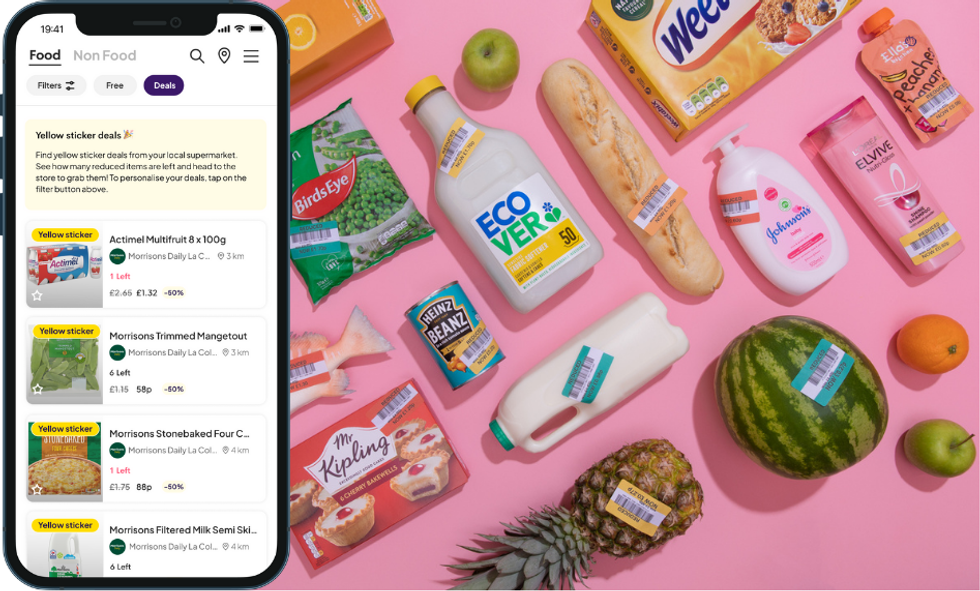
Since launching in 2019, Gander has expanded to over 500 UK stores, reducing food waste by 26 per cent and saving more than 40 million food items.
Retailers using Gander report significant financial benefits. Some stores save up to £800 per week, cutting annual waste costs by as much as £20,000. Yellow-stickered items sell 40 per cent faster, with partners achieving an 88 per cent sell-through rate. Importantly, Gander drives customer acquisition – 50 per cent of reduced-item shoppers are new to the store, and 70 per cent purchase full-priced items alongside markdowns.
“We know UK consumers value sustainability and savings,” Williams adds. “Our data shows Gander users save around 56 per cent on their food shop, supporting both their budgets and waste reduction efforts.”
Gander integrates with Facebook, Instagram, Olio Deals, Snappy Shopper, and Google to promote markdowns, increasing visibility and sales. It also enhances loyalty programmes, ensuring regular customers see discounts first.
“Gander isn’t just for bargain hunters – it drives overall store sales while making sustainability achievable for retailers,” Williams concludes.

Claire Goddard, Marketing Manager at Pricewatch, highlights Gander’s impact: “Partnering with Gander through C-Store Collective has revolutionised our sell-through rate and waste reduction. Since 2021, we've sold 260,551 reductions, increased our sell-through rate by 51 per cent, and saved 177 tonnes of CO2.”
Meanwhile, Mark Hall, waste management expert at BusinessWaste.co.uk, warns retailers about the implications of the new Simpler Recycling reforms, which took effect at the end of March.
“Defra plans to issue fines to businesses failing to comply with the new recycling rules. The first step will be a compliance notice from the Environment Agency, followed by potential fines or prosecution if ignored,” Hall informs.
From 2025, businesses in England with 10 or more employees must separate waste into dedicated bins for food, cardboard/paper, and dry recycling (plastic, metal, and glass). Hall advises retailers to conduct a waste audit to determine additional collection needs and train staff on proper waste disposal practices.
“Partnering with a broker can ensure cost-effective waste management while maintaining regulatory compliance. However, reducing waste at the source remains the best strategy for cutting costs and minimising environmental impact.”
Theft prevention
Retail theft is a growing concern, costing the UK economy £250bn annually, according to a report from Police Exchange. Thieves target high-value goods like alcohol and baby formula, often using aggressive tactics.
“Retailers must implement effective loss prevention solutions that allow customer interaction while deterring theft. Gravity risers and shelf pushers prevent thieves from sweeping products, forcing them to take one at a time,” Daryl Bedford, of Harrison Retail, explains.
Innovative fixtures such as dispensers for high-value goods limit access, reducing stock loss. Bedford adds, “Limited shelf access with dispensers is the way forward. These systems prevent bulk theft, protecting retailers from significant losses.”
Harrison Retail has showcased its solutions at Retail Risk 2025, with live demonstrations of gravity risers, FSDU surrounds, and shelf pusher systems. “Amid the cost-of-living crisis, shoplifting is worsening. Solutions like gravity risers can mean the difference between a £1,000 loss and a £100 loss,” Bedford notes.
Mark Steven, CEO at Retail AI, highlights how AI can provide an effective deterrent to the threat of shoplifting. “Our AI-powered solution integrates seamlessly with existing CCTV systems to offer a proven deterrent against shoplifting,” he says.
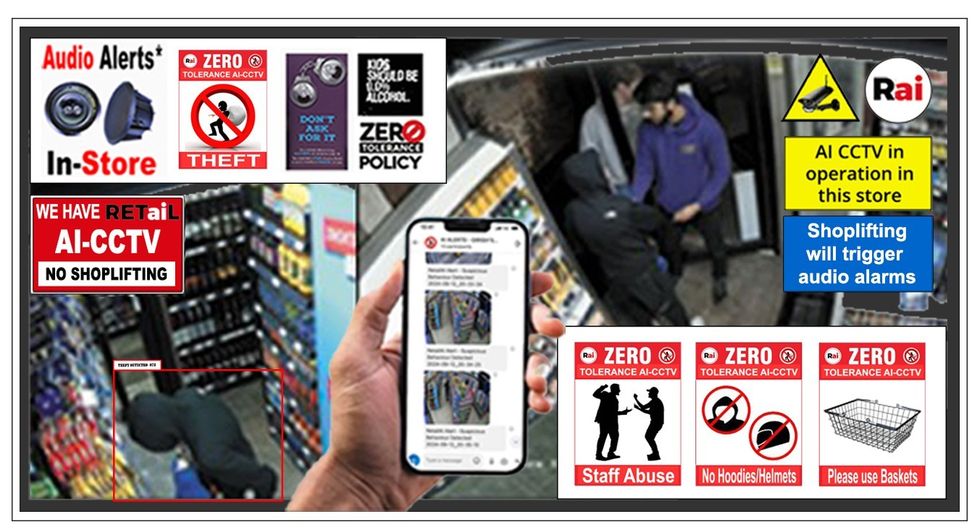
Retail AI’s anti-theft module detects suspicious behaviour in real-time, alerting store staff via a dedicated counter display while simultaneously playing an in-store warning message. This technology significantly reduces theft attempts without direct staff intervention, improving safety and reducing labour costs.
Retail AI also offers additional AI-driven tools, such as Age Sense, which verifies customer age for restricted sales, and Queue Bust, which enhances customer service. Additionally, retailers can benefit from a customised in-store audio solution that promotes sales and generates revenue through supplier advertising.
For a limited time, convenience store owners can access Retail AI’s Anti-Theft module free of charge until 31 July 2025.
Mike Severs, Sales and Marketing Director at Volumatic, underscores the importance of secure cash-handling solutions.
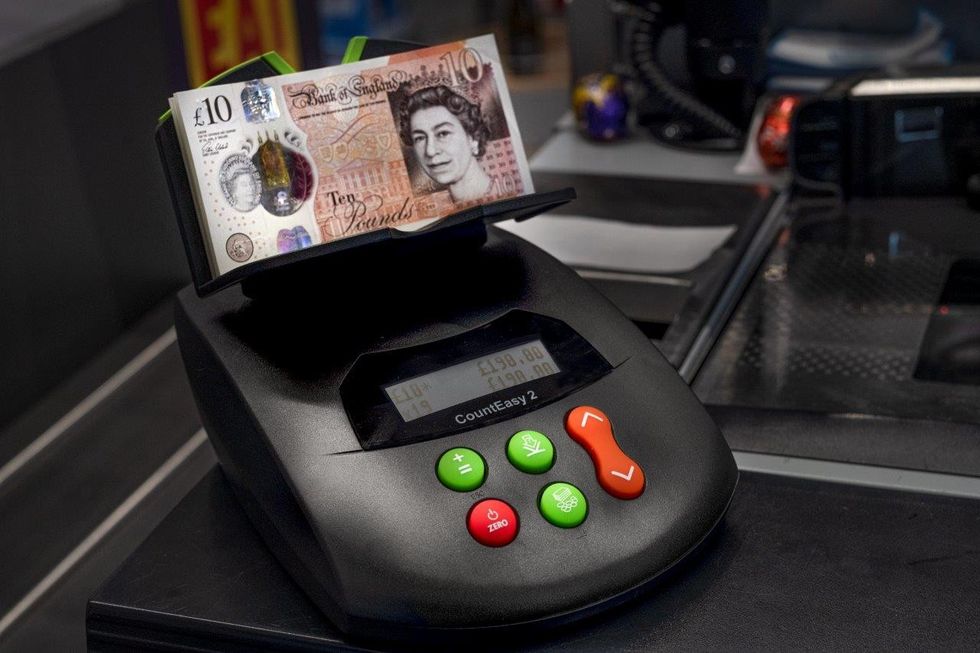
“We recommend retailers invest in products that offer extra security, such as forgery detectors, secure cash storage, and systems that limit cash exposure for both employees and customers.”
Volumatic’s CounterCache intelligent (CCi) solution validates, counts, and securely stores banknotes at the point of sale, reducing shrinkage and eliminating manual cash handling. Trusted by major retailers, CCi also integrates with in-store systems to cut cash processing costs by up to 75 per cent.
For retailers seeking additional protection, Volumatic’s Secure Cash Trolley offers safe cash transport, incorporating anti-theft features like speed-locking wheels and high-security enclosures for overnight protection.
Comprehensive retailer insurance
A spokesperson from Simply Business outlines key risks for independent convenience store owners and how to mitigate them.
“Before buying business insurance, shop owners should consider potential claims risks. Public liability insurance covers third-party injuries and property damage, while employers’ liability insurance protects against claims from injured employees.”
Beyond liability, retailers should consider stock, contents, and building insurance to cover losses from fire, theft, flood, or vandalism. Business turnover insurance provides financial protection in case of operational disruptions.
Security measures also play a crucial role in ensuring theft-related claims are honoured. “It’s essential to accurately declare any security systems in place, such as CCTV and alarms, when purchasing insurance. Failing to do so can result in claim denial.”
Common public liability claims include slip-and-trip accidents and food poisoning cases. Regular inspections and proper record-keeping can help mitigate risks. Meanwhile, employers’ liability insurance can cover legal costs and compensation for work-related injuries.
“With risks constantly evolving, shop owners should regularly review their policies to ensure comprehensive coverage tailored to their business needs,” the spokesperson added.
As 2025 progresses, independent retailers must embrace a tech-forward approach to remain competitive. The adoption of automation, AI-driven insights, digital payment solutions, and alternative fulfilment methods like lockers will define the success of retailers in an increasingly digital world. While challenges such as rising operational costs and supply chain volatility persist, technology provides a pathway to improved efficiency, enhanced security, and increased revenue opportunities.
For convenience retailers, the future is digital – and those who invest in the right technologies today will be best positioned for success tomorrow.







